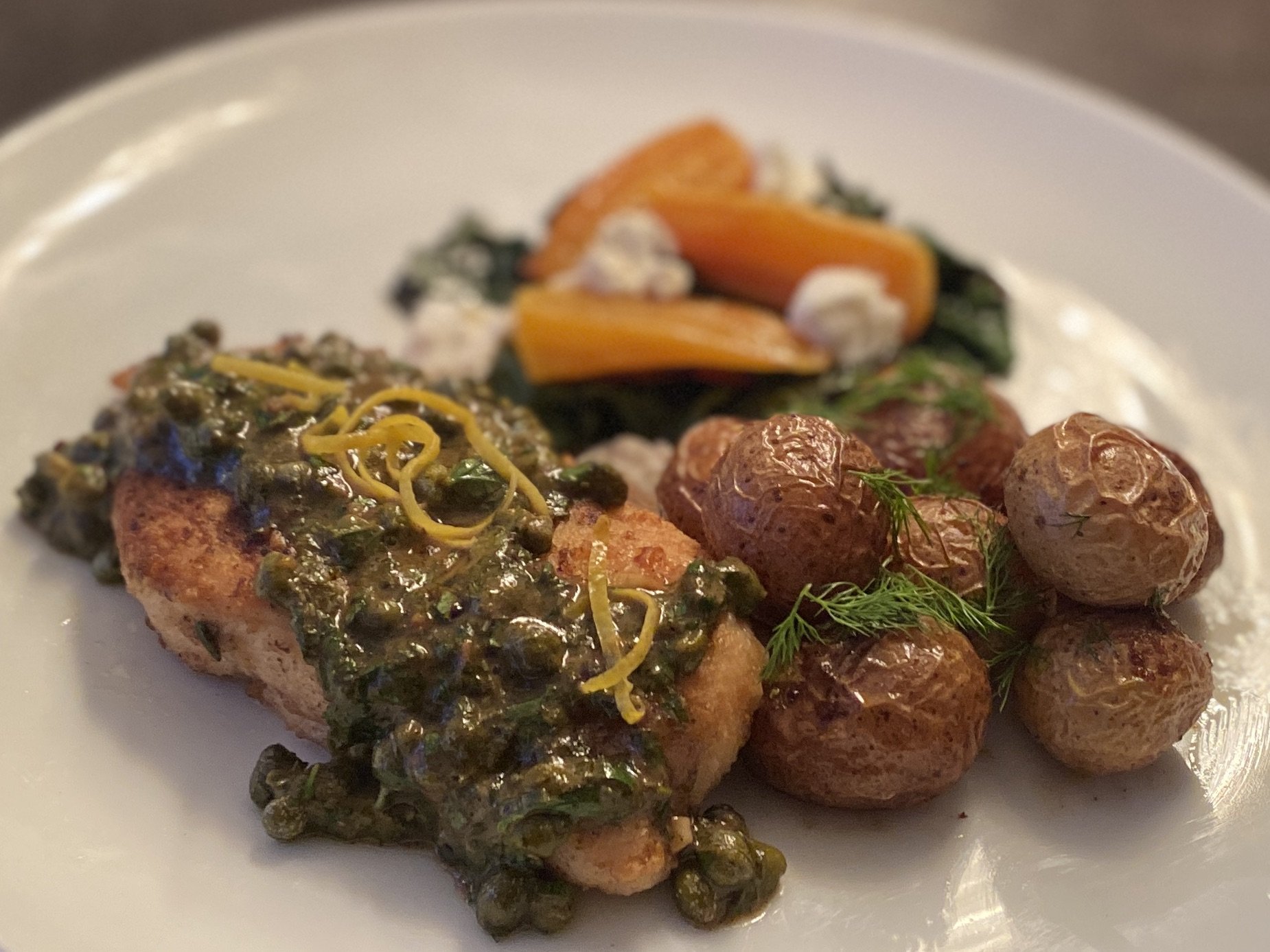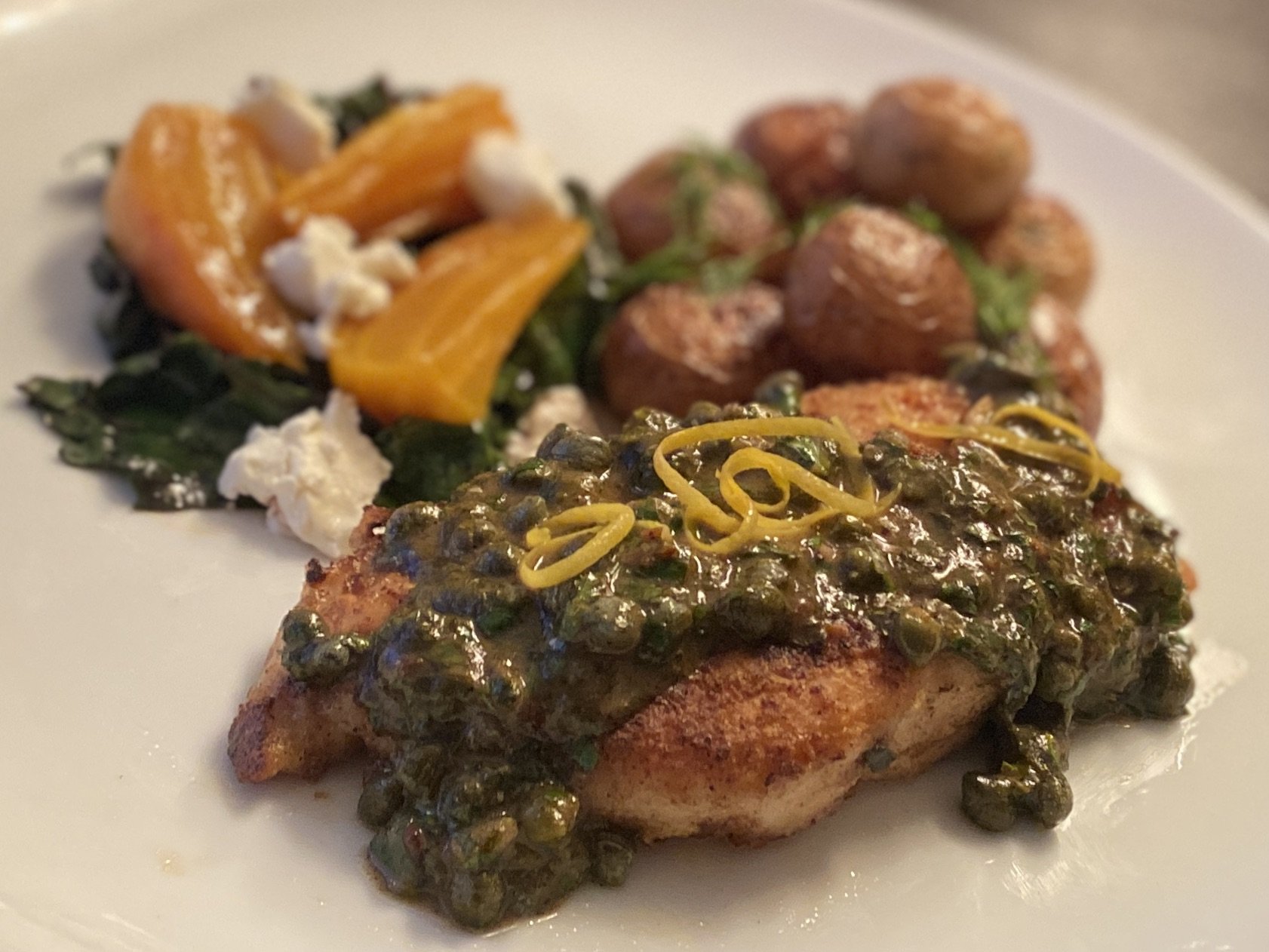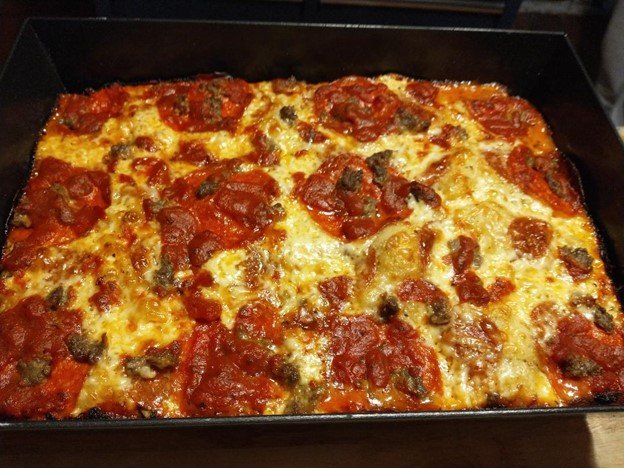Piccata Perfection: What to Eat When Winter Just Won’t End
Once Valentine’s Day is over each year, I’m usually at the point in winter where I am so over it I have to mentally prepare myself for tiny physical outdoor tasks, like taking out the recycling or getting the paper. Even if it isn’t a mind-numbingly cold, negative-30-degrees-before-the-windchill-style Minnesota day, it’s still really, really cold. If you don’t live somewhere with punishingly cold winters, the heavy braises and slow-cooker cold weather meals still start to get old and make you crave the fresh, lighter spring fare that somehow seems so far away. So if you’re sick of burying yourself underneath a metaphorical weighted blanket woven out of heavy food and streaming services, never fear – there is a halfway point between slow-cooker chili and grilled asparagus. An uplifting, pre-spring midpoint to bridge the gap.
Enter piccata. With a bright and briny injection of citrusy sauce, it stirs your senses when it seems like winter will last forever. It’s so easy. It uses ingredients you either already keep, or should keep, on-hand. And it’s still fried. But like, barely. Compared to the other forms of frying, this version is just above saute and just below pan-fry in amount of fat required. There is minimal mess and splattering, with maximum crispiness. And then the lemon, and the capers and the parsley! So bright, so piquant, so fresh!
One note: I brined my chicken breasts before patting dry and applying the mallet. So I did not actually add salt. But for ease and time-saving, I’m writing this as if I did not brine and, instead, I included salt in the ingredient list. So brine, or don’t, you do you. Let’s make it!
Chicken Piccata
Serves 4
Ingredients
2 large lemons, zested* and juiced
1 TB Dijon mustard
3 cloves garlic, minced
1/4 cup capers, patted dry
4 boneless, skinless chicken breasts (6 to 8 oz each)
1/4 tsp salt
1/4 tsp pepper
1/4 cup all-purpose flour
6 tablespoons butter
1/4 cup dry white wine
1/2 cup flat-leaf Italian parsley leaves, chopped
Directions
Heat oven to 200ºF. Line sheet pan with parchment paper.
In small bowl, whisk lemon juice, mustard and garlic. Stir in capers.
Place chicken breasts on large cutting board, cover with a large piece of plastic wrap, then pound the smooth side of a meat mallet (or the side of a can of tomatoes or beans) until about 1/2- to 3/4-inch thick. Discard plastic and season chicken with salt and pepper.
Place flour in large shallow bowl or pie plate. Add chicken breasts, one at a time and toss to coat. Tap to remove excess flour.
In large skillet, melt 3 tablespoons of the butter over medium-high heat. Add two of the chicken breasts and cook 4 minutes on first side, then turn, reduce heat to medium and cook 4 to 6 minutes longer, until cooked through (at least 165ºF in center). Transfer to prepared sheet pan and place in oven.
Melt remaining 3 tablespoons of butter over medium-high heat. Add remaining chicken breasts and cook 4 minutes on first side, then turn, reduce heat to medium and cook 4 to 6 minutes longer, until cooked through (at least 165ºF in center). Add to sheet pan in oven.
Add wine to skillet and bring to a boil, scraping pan with spatula to collect fond. Immediately stir in lemon juice mixture and return to a boil. Reduce to a simmer and cook, stirring often, 1 to 2 minutes, or until slightly reduced. Remove from heat; stir in parsley.
Top each chicken breast with a generous amount of the pan sauce. Top with lemon zest.
*For the prettiest zest, use a traditional citrus zester or even a channel knife. A microplane is a great tool, but creates smaller, less desirable zest for garnishing. Two large lemons should make 1/2 cup. Measure lemon juice into a measuring cup. If less than 1/2 cup, add more lemon juice, dry white wine, cider vinegar or water.
I served the piccata with roasted new potatoes with dill, yellow beets with goat cheese and crispy beet greens, but of course it’s great with a simple pasta tossed in butter or olive oil and Parmesan cheese.
Chicken Piccata, roasted new potatoes with dill, yellow beets with goat cheese and crispy beet greens




















